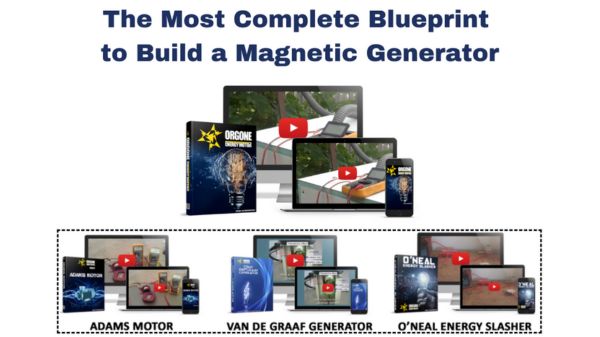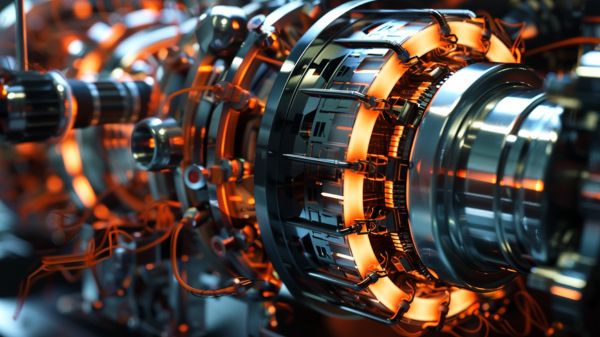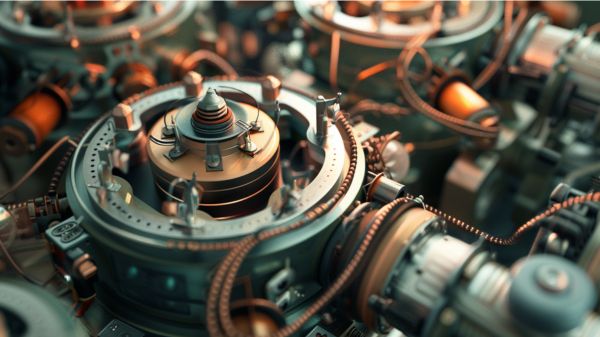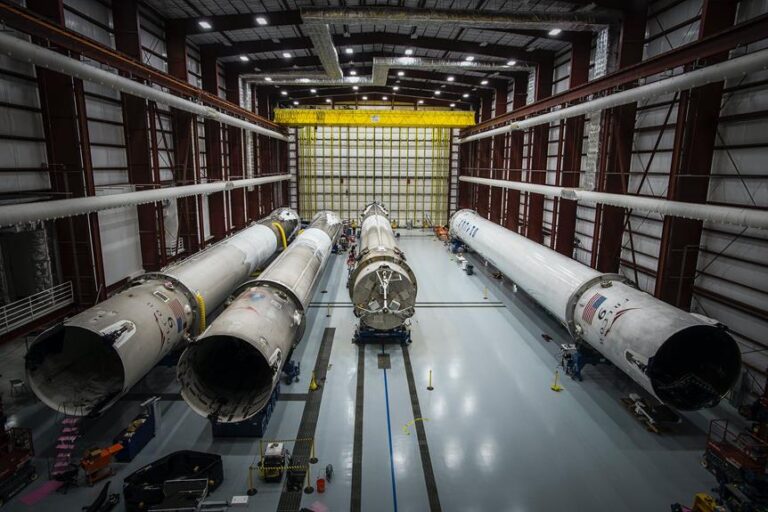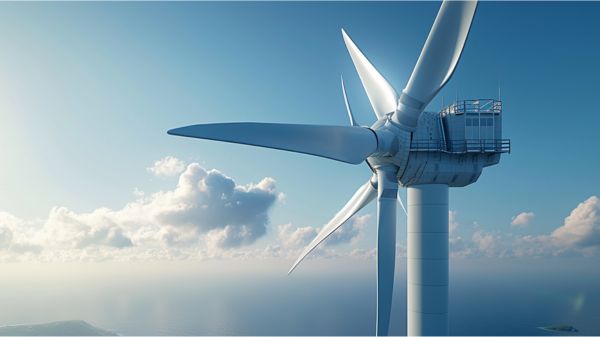How to Build a Magnetic Power Generator at Home
Imagine being able to generate your own electricity right at home, using the power of magnets. With just a few simple materials and a bit of know-how, you can build your own magnetic power generator.
But how does it work? What are the steps involved in constructing this innovative device? In this discussion, we’ll explore the science behind magnetic power generation and walk you through the process of building your very own generator.
So, if you’re curious about harnessing the power of magnets to create electricity, keep reading to find out how.
Key Takeaways
- Copper wire and high-quality magnets are essential components for building a magnetic power generator at home.
- Proper magnet placement and alignment are crucial for optimizing the magnetic field and efficiency of the generator.
- Understanding the science behind electromagnetic theory and voltage induction is key to building and maintaining a functional generator.
- Regular maintenance checks and troubleshooting are necessary to ensure optimal performance and voltage induction.
Necessary Materials
To build a magnetic power generator at home, you’ll need a few necessary materials. First, you’ll require copper wire, which will be used to create the coil that generates electricity. The length of wire needed will depend on the size of your generator.
Additionally, you’ll need two magnets, which play a crucial role in producing electricity. These magnets should be of high quality and strong enough to create a magnetic field. The magnets will be attached to a spinning nail, causing the production of electricity when in motion.
Building the Frame
To build the frame for your magnetic power generator, you’ll need to gather the necessary materials and follow the assembly instructions carefully.
Start by cutting a cardboard sheet to the dimensions of 8cm x 30.4cm. Then, create a box shape by securely scoring and folding the cardboard.
Remember to insert a nail through the center hole to ensure it spins freely.
Frame Materials and Dimensions
The frame for the magnetic power generator is constructed using cardboard measuring 8cm x 30.4cm, which is scored, folded, and taped together to form a sturdy box shape. This box provides the foundation for holding the components of the generator securely in place during operation.
A hole is created in the center of the box to allow for the insertion of a nail, which will act as the spinning element. It is essential to ensure that the frame is sturdy and secure to support the spinning components effectively.
The dimensions and construction of the frame are crucial for the overall stability and functionality of the magnetic power generator.
| Frame Materials and Dimensions | |
|---|---|
| Materials | Dimensions |
| Cardboard | 8cm x 30.4cm |
| Nail | – |
| Tape | – |
| Scissors | – |
| Ruler | – |
Assembly Instructions and Tips
Once the frame has been constructed using the specified materials and dimensions, the next step is to assemble the magnetic power generator by following these assembly instructions and tips:
- Carefully fold and secure the cardboard sheet to form a sturdy frame. Use tape to ensure the frame remains intact during operation.
- Remember to create a hole in the center of the frame to accommodate the spinning nail. This allows the nail to rotate freely within the frame.
- Wrap the wire around the frame approximately 250 times. Make sure the wire is tightly wound to maximize electricity generation.
Securing the Magnetic Components
For secure placement and optimum functionality, the magnetic components of the homemade power generator must be carefully secured to the frame. Magnet placement is crucial to ensure efficient movement and electricity generation.
To secure the magnets, you can use adhesive options such as hot glue. Four ceramic magnets, sized 1x2x5cm, should be placed on each side of the nail, ensuring they don’t interfere with the flow of electricity.
The frame, made from a cardboard box measuring 8cm x 30.4cm, serves as the foundation for the wire winding process. This process is essential for generating electricity.
Frame Finishing
To finish the frame, first, sand down any rough edges to ensure a smooth surface.
Then, apply a layer of varnish or paint to protect the frame from moisture and increase its durability.
Lastly, check for any weak points and reinforce them if necessary to ensure the frame can effectively support the magnetic generator components.
Painting the Frame
To achieve a smooth and durable finish on the cardboard frame, begin by sanding it to create a suitable surface for painting. This step is crucial as it helps to remove any imperfections and roughness, ensuring a flawless end result.
Once the frame is sanded, it’s time to select the colors for your magnetic power generator. Consider vibrant shades that will bring life and energy to your project. When applying the paint, use brush techniques that allow for even coverage and smooth strokes.
Remember to allow each coat of paint to dry completely before applying the next layer. This ensures proper adhesion and prevents smudging. You can also experiment with mixing colors to create unique combinations that reflect your personal style.
Lastly, pay attention to texture effects and paint application, as they can add depth and visual interest to the frame.
Adding Protective Coating
Consider applying a protective coating to the frame of your magnetic power generator to safeguard it against moisture, wear, and environmental factors. A protective coating can significantly increase the durability and lifespan of your generator, ensuring long-term functionality.
When choosing a coating, opt for varnish, paint, or sealants that offer weather resistance properties. These coatings will shield your generator from the damaging effects of humidity, rain, and temperature fluctuations.
To apply the coating, use a brush or spray gun and make sure to cover the frame evenly. Allow the coating to dry completely before assembling the generator to ensure optimal protection.
Regular maintenance is essential to preserve the protective coating, so consider inspecting and reapplying it periodically. By adding a protective coating to your magnetic power generator, you not only enhance its aesthetics but also safeguard it against corrosion and environmental wear.
Securing the Corners
If you want to ensure the stability and durability of your magnetic power generator, it’s crucial to properly secure the corners of the frame. Corner reinforcement plays a vital role in maintaining the overall stability of the generator.
Here are three construction tips to help you secure the corners effectively:
- Reinforce the corners with additional tape: Adding extra tape to the corners will distribute the weight and stress evenly across the frame, preventing it from collapsing during operation.
- Ensure tight corner security: Make sure that the corners are tightly secured to provide maximum stability for the magnetic power generator.
- Enhance frame strength: Properly securing the corners will enhance the frame’s strength and durability, increasing the longevity and performance of your DIY magnetic power generator.
Wiring the Generator
To wire the generator, wrap the wire around the cardboard box approximately 250 times, ensuring proper connectivity by stripping the wire ends with sandpaper. This step is crucial for the generator’s electrical function.
By wrapping the wire around the box, you create multiple layers of wire winding. This winding is essential for generating voltage when the magnets start to move. The wire insulation plays a vital role in maintaining the integrity of the electrical circuit.
Stripping the wire ends with sandpaper ensures a clean connection, allowing for efficient flow of electricity. Once the wire is properly connected, you can test the generator’s voltage generation by connecting the wire ends to a light and spinning the nail. This will demonstrate the power of the generator in producing electricity.
Installing the Magnets
To install the magnets, securely attach them to the spinning element of the generator, ensuring proper alignment and spacing for optimal electricity production. Here are three key considerations for magnet placement:
- Use high-strength neodymium magnets to generate a powerful magnetic field. Their compact size enhances the generator’s performance, making them an ideal choice for your magnetic power generator.
- Optimize the magnetic field by positioning the magnets strategically. Ensure that the magnetic poles align properly to create a strong and consistent field.
- Pay attention to magnet spacing efficiency. Place the magnets at regular intervals to maintain a uniform magnetic field, maximizing electricity production.
Testing Your Power Generator
Have you ever wondered how to test the functionality of your magnetic power generator?
After building your magnetic power generator, it’s important to conduct voltage testing to ensure it’s working properly. To do this, connect the wire ends to a light bulb. As you spin the nail with the magnets attached, it will generate electricity.
If the generator is working correctly, the light bulb should illuminate, indicating the conversion of magnetic energy into electrical energy. If the light bulb doesn’t illuminate, there may be an issue with your power generator.
Troubleshooting tips include checking the connections, ensuring the magnets are positioned correctly, and inspecting for any damages. Regular maintenance checks are also crucial to keep your power generator operating efficiently.
Understanding the Science Behind It
Understanding the science behind magnetic power generators involves delving into the principles of magnetism and electromagnetism. Here are three key concepts to grasp:
- Electromagnetic theory: This theory explains the relationship between electricity and magnetism. It states that a magnetic field is produced when an electric current flows through a wire, and vice versa. This principle is crucial in understanding how a magnetic power generator converts motion into electrical energy.
- Magnetic field: A magnetic field is the region around a magnet where its influence can be detected. In a magnetic power generator, magnets are strategically placed to create a strong and consistent magnetic field. This field interacts with the wire coils to induce a voltage.
- Voltage induction: Voltage induction occurs when a changing magnetic field induces a voltage in a nearby wire. In a magnetic power generator, the spinning motion of magnets induces a voltage in surrounding wire coils. The faster the magnets rotate, the higher the voltage produced.
Understanding these principles will empower you to build and operate a magnetic power generator effectively.
Related Post: What is The Science Behind Generating Power With Magnets.
Frequently Asked Questions
Can a Magnetic Generator Power a House?
A magnetic generator has pros and cons when it comes to powering a house. It can provide electricity, but may not be enough for everything. Cost analysis and environmental impact should be considered.
How Do You Make a Homemade Generator With a Magnet?
To make a homemade generator with a magnet, you’ll need materials like cardboard, a nail, copper wire, and a small bulb. By winding the wire around the nail and attaching it to the bulb, you can demonstrate electricity generation through magnet movement.
Why Don’t We Use Magnetic Generators?
Magnetic generators have limitations in generating high power for industrial use. However, ongoing research aims to optimize their efficiency and cost-effectiveness. In the future, these generators could offer benefits such as renewable energy and reduced dependence on traditional power sources.
How Many Volts Can a Magnetic Generator Produce?
A magnetic generator can produce a range of voltages, from 1 to 100 volts. The number of windings, magnet strength, and rotation speed affect the output. Larger generators with more coils and stronger magnets can generate higher voltages.
Conclusion
Building a magnetic power generator at home allows you to tap into the unseen forces of magnetism and harness them to generate electricity.
By constructing a simple frame, wiring it with magnet wire, and attaching magnets to a spinning nail, you can create a fascinating display of movement and energy.
This DIY project not only provides a practical source of electricity but also serves as a captivating introduction to the wonders of home electricity production.

